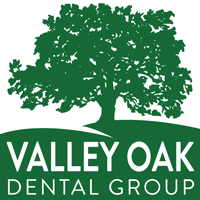Valley Oak Dental Group
During a normal cleaning routine, X-rays and oral exams will often highlight signs of cavities or soft spots on the teeth. While cavities are often the main objective in an exam, dentists will look for many other ailments inside your mouth.
Learn what to expect from your next dental cleaning and educate yourself on all of the mouth issues a dentist will look for. When you know what a dentist looks for, you can ask more questions and receive instructions to improve your oral health in the future.
Teeth Grinding
Medically known as bruxism, a dentist can almost immediately tell if a person has been grinding their teeth. Teeth grinding can wear away teeth, expose enamel, and chip teeth. Constant jaw clenching can also result in jaw issues and pain for long periods of time.
In many cases, people will grind in their teeth. The extra stress applied to your mouth could impact your sleep as well. If a dentist does notice excessive grinding, they may recommend that you use a mouth guard while you sleep. A mouth guard will protect your teeth and prevent further damage.
If major damage has already occurred, a dentist may recommend veneers or tooth bonding to repair your teeth.
Gum Health
Even though a dentist’s cleaning is focused on the teeth, gum health is just as important. The bright lights connected to a dental chair allow a dentist to look inside your mouth and see your gums. The gum color is important, along with any swelling or bleeding of the gums.
A change in the gums is typically a sign of gum disease. When a dentist uses their tools to clean between the teeth and gums, they will look for bacteria build-up. If your gums bleed easily, you could have the start of a gum disease like gingivitis. Gum exams occur during the floss portion of the exam. Any form of gum bleeding could mean you need a deeper cleaning.
Your mouth could be prone to bacteria growth, but that just means that you need to take extra care to keep it healthy.
Wisdom Teeth Growth
If you have not had your wisdom teeth taken out, then a dentist will make a wisdom tooth inspection a part of your regular cleaning. If you receive X-rays, a dentist can look over the images to see if your wisdom teeth have grown or moved in your jaw. A dentist will also look inside your mouth to see if any of your teeth are breaking through the gums and affecting other teeth.
If wisdom teeth push too much on other teeth, then you could run into oral issues. If a problem does occur, then a dentist will set up a referral to proceed with wisdom teeth extraction.
Tonsils
The tonsils are another area that a dentist will focus on. During an appointment, a dentist will perform a quick visual exam on the tonsils. Basically, the dentist will look for any signs of issues. Some of the more common issues may include swollen or enlarged tonsils. A dentist can spot any growths or unusual changes with the tonsils.
Another issue a dentist may notice is the presence of tonsil stones. The stones typically form when bacteria in your tonsils feed on food particles and other things like mucus. Smaller tonsil stones typically present no problems, but larger ones can cause discomfort and may grow up to the size of a grape. A dentist can help extract larger tonsil stones.
If tonsil issues persist, a dentist may have your tonsils removed to prevent problems in the future.
Oral Cancer Screening
Another element of a tooth exam you likely won’t even notice is an oral cancer screening. Dentists are trained to recognize any visual signs of oral cancer. Some of the earliest signs a dentist looks for are major changes to your mouth, tongue, and gums, an increase in sores, and red or white patches.
Typically, if they don’t spot anything, the dentist will not even mention the screening. However, they may focus more on the oral cancer screening if you have any risk factors like tobacco use.
Before your exam, you will list the risk factors on your paperwork so the dentist is aware. For example, if you have excessive sun exposure without proper protection, then you could be at risk for getting skin cancer on your lips.
If the dentist spots any of the early signs, then they may move forward with additional tests. Painless tests may include a dye test that highlights abnormal cells or a special light test that also shows abnormal cells.
Book your cleaning appointment with us at
Valley Oak Dental Group to take advantage of all the extra services. Our professional dentists and hygienists offer the training and experience to ensure your mouth is healthy.
Search Post
Recent Posts
Valley Oak Dental Group offers a variety of experienced dentists for your convenience. Get all your dental care in Manteca, CA with us.
Office Hours
Monday 8:00 am - 5:00 pm
Tuesday 6:00 am - 7:00 pm
Wednesday 8:00 am - 8:00 pm
Thursday 6:00 am - 5:00 pm
Friday 6:00 am - 5:00 pm
Every 3rd Saturday 8:00 am - 4:00 pm
Sunday Closed
Oral Surgery Hours Click Here
© 2023 Content, including images, displayed on this website is protected by copyright laws. Downloading, republication, retransmission or reproduction of content on this website is strictly prohibited.
Terms of Use
|
Privacy Policy
|
Disclaimer
|
Accessibility |
HIPAA
Website Built by
BROADPROXIMITY








